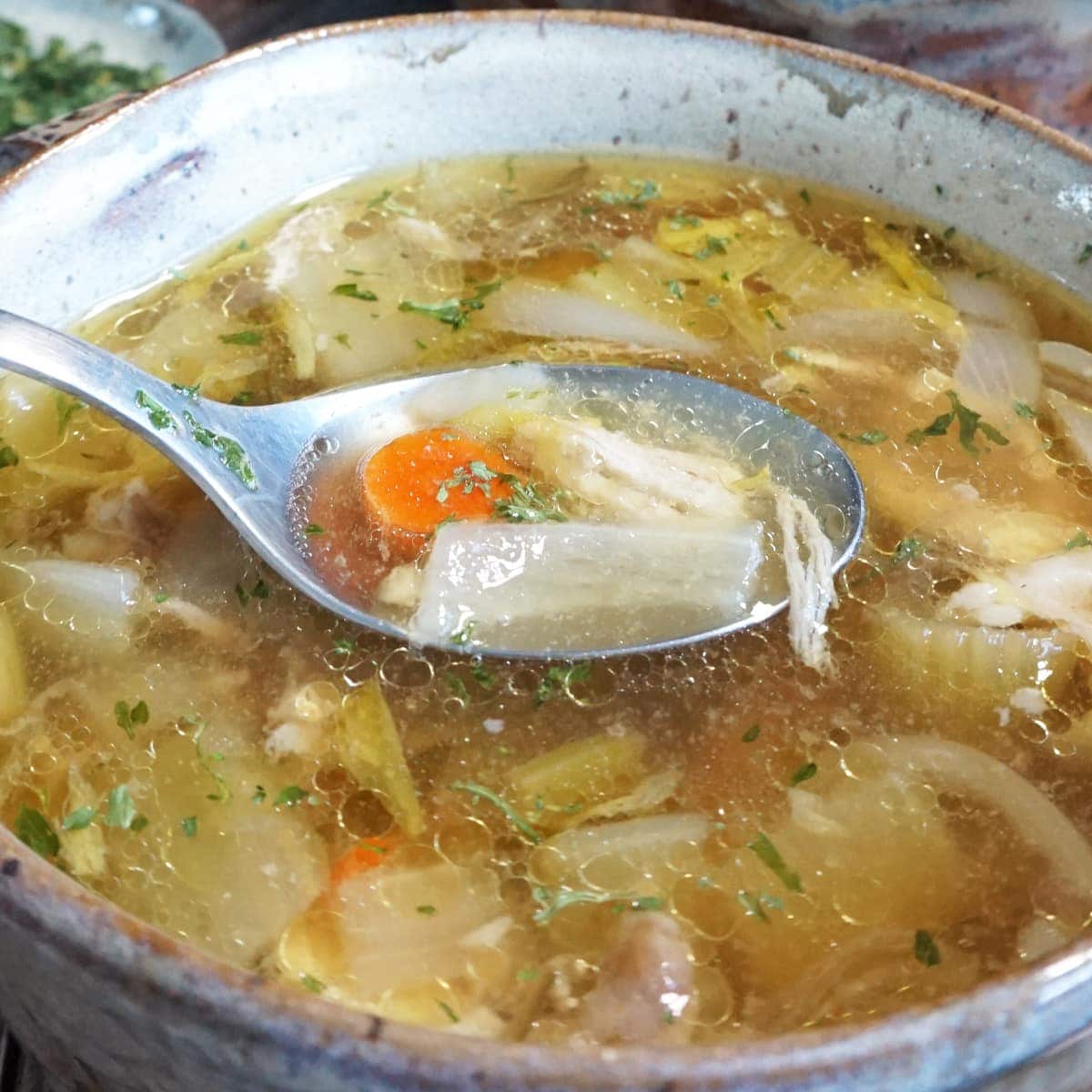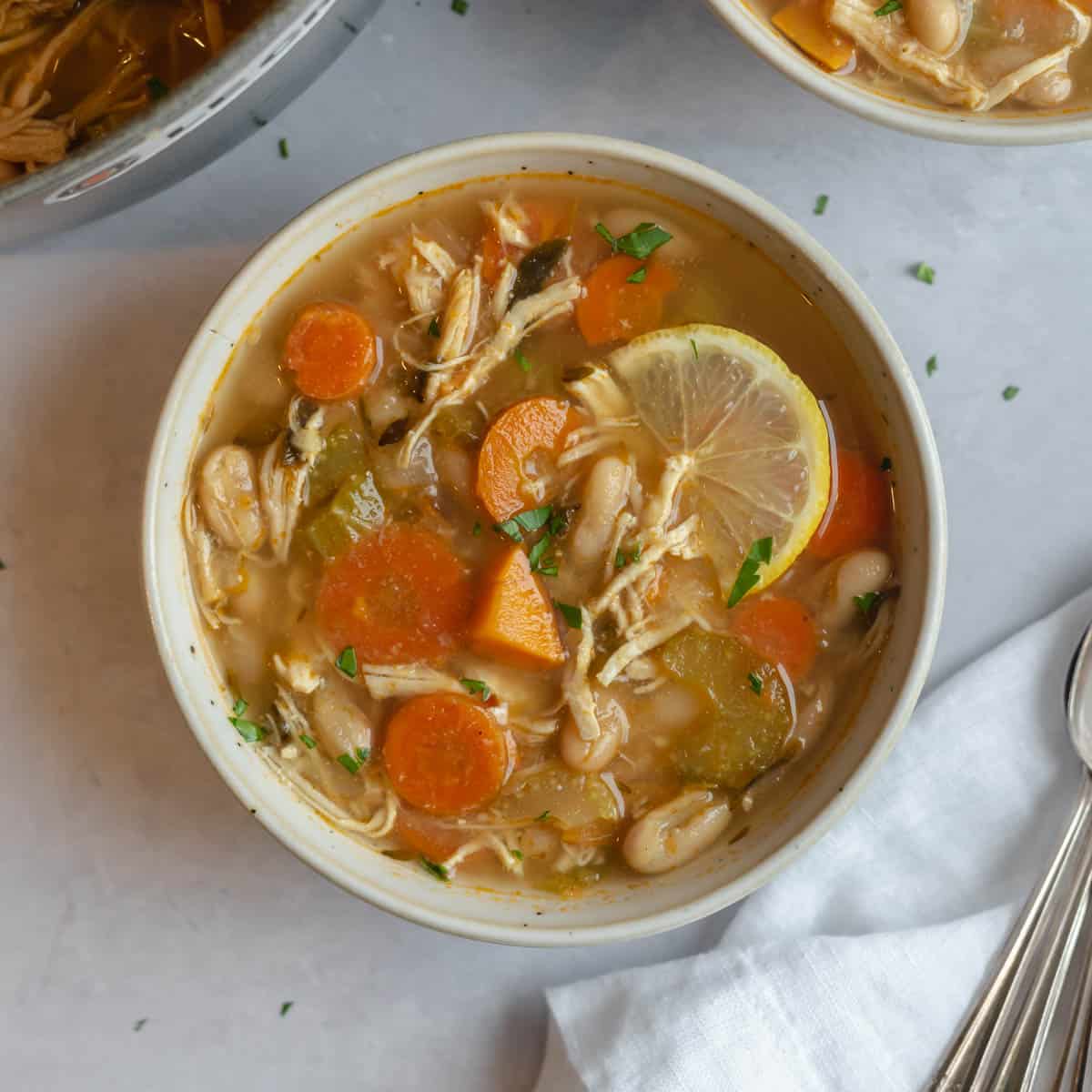Discovering the Caloric Content of Homemade Chicken Soup Without Noodles
Homemade chicken soup holds a special place in many kitchens as a comforting, nourishing dish. For those focusing on calorie intake, understanding the caloric content of this staple, especially without noodles, can be crucial. The simple ingredients in chicken soup contribute to its relatively low calorie count, making it an excellent option for those watching their calorie intake.
The Basics of Chicken Soup

Traditionally, chicken soup is a mixture of chicken pieces, often including bones, combined with a variety of vegetables. This mixture is simmered in water to create a flavorful broth. The addition of herbs and spices can enhance the taste without significantly increasing calorie content. The simplicity of these ingredients underscores why chicken soup can be both satisfying and low in calories, especially when noodles are omitted.
Core Ingredients and Their Caloric Impact
To understand the calorie count in homemade chicken soup without noodles, it’s essential to break down its core components. Chicken is the primary ingredient and varies depending on whether you use breast meat, thighs, or a whole chicken. Skinless chicken breast, for example, is leaner, containing roughly 165 calories per 100 grams, while thighs have slightly more fat and calories.
Vegetables like carrots, celery, and onions are the foundation for building flavor in the soup. These vegetables are low in calories, with carrots containing about 41 calories per 100 grams and celery an even lower calorie count of approximately 16 calories per 100 grams. The inclusion of onions, at about 40 calories per 100 grams, adds to the flavor profile without adding many calories.
Caloric Breakdown
A standard serving size of chicken soup without noodles (approximately 1 cup or 240 ml) typically comprises a mix of broth, pieces of chicken, and vegetables. Estimating the caloric content for one serving can vary, but a reasonable approximation would be between 150 to 200 calories. This estimation accounts for the simmered chicken’s juices and fat, along with the cooked vegetables.
When cooking your soup, extracting flavors from the chicken bones can enrich your broth. This process generally does not add calories but enhances nutritional benefits by releasing collagen and minerals. Additionally, seasoning the broth with herbs like thyme or parsley, or spices like pepper, can amplify flavors without affecting the calorie count.
Modifying Caloric Content

If you’re looking to manage calorie intake further, consider a few tweaks. Using chicken breast instead of dark meat can lower calorie content. Trimming skin and visible fat from chicken pieces before cooking can also help. The choice of vegetables can be adjusted based on personal preference, keeping in mind that root vegetables generally have more calories than leafy greens.
For those who enjoy a heartier texture without noodles, adding extra vegetables or incorporating leafy greens like spinach or kale can increase volume with minimal calorie addition. These greens are dense in nutrients yet low in calories, making them ideal to round out your soup.
Conclusion
Homemade chicken soup without noodles is not only a comfort food but a health-conscious choice. Understanding its basic components and their nutritional values allows you to appreciate its role in a balanced diet. By focusing on fresh ingredients and mindful preparation, you can enjoy a delicious bowl of soup without compromising on your dietary goals. Whether warming up on a chilly day or simply savoring the wholesome taste, this soup remains a timeless classic.













